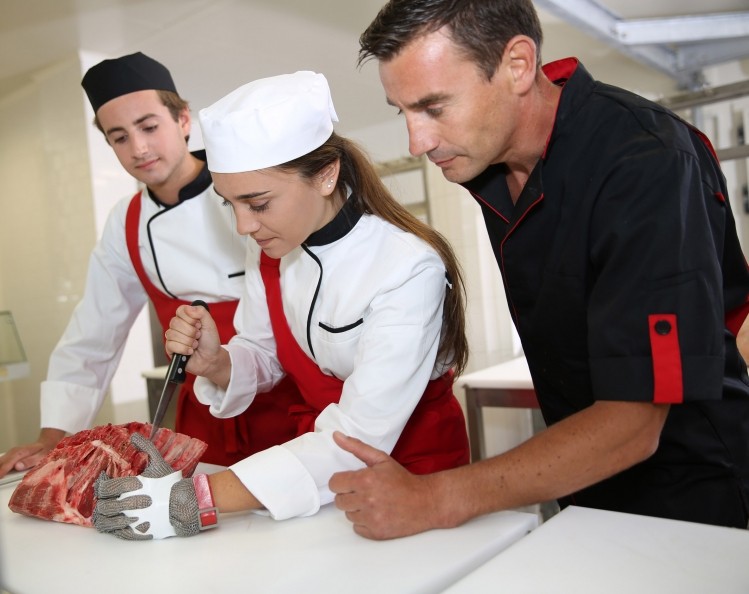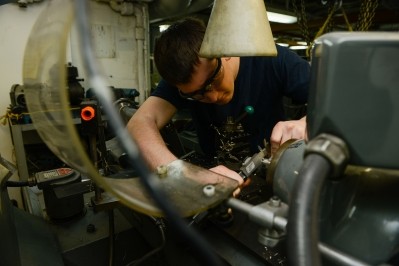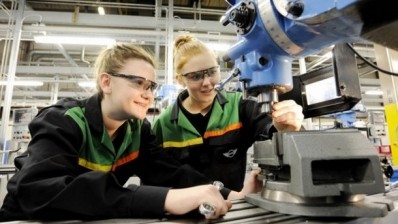Act now to make most of the apprenticeship levy

National training provider Remit Training, which works with blue chip manufacturers such as Bakkavor, Tulip, Cranswick, as well as Starbucks, has advised more companies to start making preparations for next year’s funding reforms.
“As a training provider we are able to steer our partner clients through planned changes, but our message to all businesses in our sectors is to consider their options now and have a plan in place to ensure they maximise this opportunity before new changes come into place,” said Remit’s chief executive Sue Pittock.
The apprenticeship levy, which is designed to address the UK’s skills deficit and help meet the government’s target of achieving 3M apprentices by 2020, will impose a tax on all firms with a wage bill of more than £3M a year.
Apprenticeship levy
The levy, which will only apply in England, will amount to 0.5% of a firm’s total wage bill, which must take account of bonuses, National Insurance and car allowances as well. The employer will benefit in kind from a levy allowance of £15,000 a year to offset the levy it pays and by using digital vouchers to fund the cost of training apprentices.
Those with wage bills below £3M a year will be expected to pay a “co-investment” contribution towards their apprenticeship training needs, with extra costs coming from the apprenticeship levy pot, said Remit.
While the precise details of how the levy will operate are still emerging, it is likely to impose further cost burdens on manufacturers affected by it, unless they take full advantage of rebates for funding their own apprenticeship programmes. Although there is a tight deadline to meet, Remit doubted there would be any delay in the levy’s introduction beyond April 2017.
The UK’s food and drink manufacturing sector needs to recruit 130,000 skilled workers by 2024 to replace those retiring, but Food and Drink Federation director general Ian Wright has called for the apprenticeship levy to be put on hold, given the extra burdens it already faces following the Brexit vote – notably higher ingredients import costs because of the falling value of the pound and uncertainty over the future of EU employees in the sector.
Around 25% of the 400,000 people employed in the UK food and drink manufacturing sector come from other EU countries, and Brexit has already placed questions over their security of continued residence in the UK.
“It would be interesting to see how the government would fund that 3M apprenticeship target without introducing the levy,” said Kathryn Gundle, Remit’s quality manager. “We are working with all of our employers on the basis that the apprenticeship levy will be implemented in April.”
Learning and development strategy
Remit’s head of food Diane Herft said: “Quite a few food manufacturers haven’t really invested in a lot of learning and development strategy and they are quite new to some of this. It takes quite a long time to implement a programme on this scale, especially when you are talking about very large manufacturers with a large levy pot to implement a large apprenticeship programme.”
Remit referred to research that has shown that 80% of firms employing apprentices reported it made their workplaces more productive. Around 75% of employers with apprenticeship programmes also claimed they helped cut recruitment costs, said Remit.
“The more companies are set up and ready to go when the levy comes in, they will see a better return on investment in their businesses through improved processes,” said Herft.
Remit remarked that some businesses might find the value of their levy wasn’t sufficient to cover the number of apprentices in their current business structure, creating a problem whereby they have to pay a large levy bill plus an additional bill if they want to maintain the number of apprentices they employ.
The training provider suggested one option in this scenario might be to use funding from the levy on training and development for apprentices that were already working within the business rather than recruiting new apprentices. And, if a business expected to recruit more apprentices than the value of its levy bill, it could apply for co-investment from government, Remit explained.
What apprenticeship levy businesses will pay
Example 1: An employer with an annual pay bill of £5M will pay:
Levy sum: 0.5% x £5M = £25,000
Subtract levy allowance of £15,000 = £10,000 annual levy payment
Example 2: An employer with an annual pay bill of £2M will pay:
Levy sum: 0.5% x £2M = £10,000
Subtract levy allowance of £15,000 = £0 annual levy payment
Example 3: An employer with an annual pay bill of £1bn will pay:
Levy sum: 0.5% x £1bn = £5M
Subtract levy allowance of £15,000 = £4.985M
* Courtesy of Remit


















